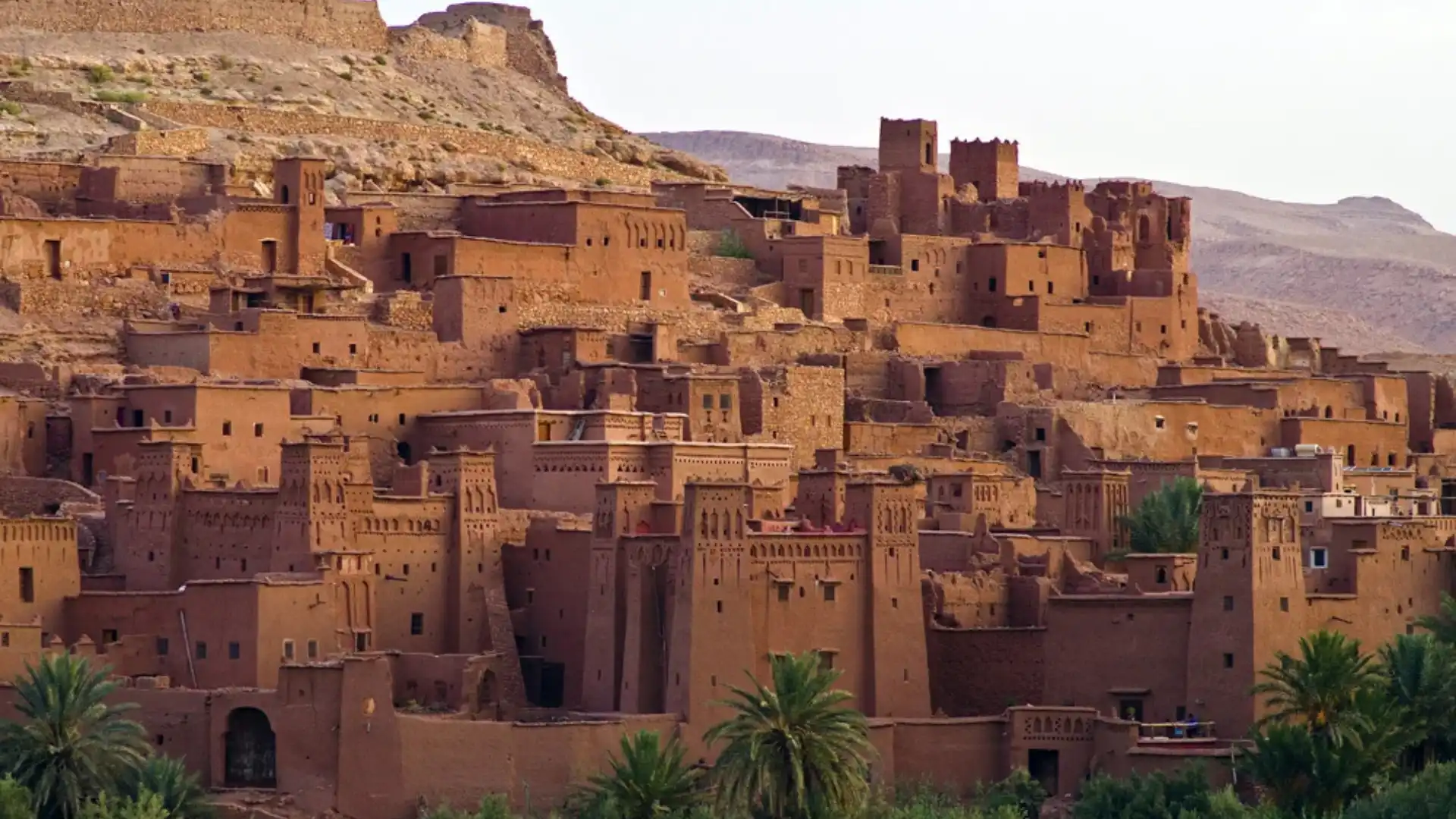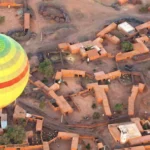Morocco, with its sun-kissed landscapes and rich history, harbors a treasure trove of architectural marvels: the Kasbahs. These enduring structures, constructed from earth, clay, and straw, stand as silent witnesses to centuries of Berber and Arab influences.
Let yourself embark on a journey through time, exploring these remarkable fortresses that continue to shape Morocco’s identity. However, what is Kasbah? In essence, a Kasbah is a fortified residential structure a fusion of artistry and practicality.
These robust edifices served dual purposes: safeguarding local populations from invaders and enduring the harsh desert climate. Their dense walls composed of a mixture of clay, straw, and stones, create structures that defy time and the elements.
The Two Faces of Kasbahs
- Northern Kasbahs: In the north, Kasbahs like the Kasbah of the Oudayas in Rabat, Alcazaba in Chaouen, and the Kasbah in Tangier evoke Muslim culture. These fortified buildings once housed governors and featured administrative and military spaces. Their legacy extends to the Spanish Muslim heritage, where they are known as Alcazabas.
- Southern Kasbahs: Here lies the heart of Arab and Berber cultures. These Kasbahs hosted wealthy families and served as vital trade route stops. Unlike their northern counterparts, they were not intended for perpetuation or expansion. Constructed primarily from adobe, they require constant maintenance to prevent structural collapse.
The Route of a Thousand Kasbahs
Although the name may seem grandiose, it aligns with reality. Southern Morocco boasts over a thousand Kasbahs, each with its unique story. Some stand proudly in the plains, while others perch atop rugged hills. Let us explore their diversity:
- Ouarzazate: the journey begins here, home to Atlas Studios, the world’s largest film studio. Nearby, the Kasbah of Taourirt beckons with its labyrinthine passages and hidden courtyards.
- Skoura: Amidst palm groves, discover the Palmeraie Kasbahs Amerhidil, Aït Abou, Aït Souss, and Dar Aïchil. Orchards yield citrus fruits, figs, and olives, creating a harmonious blend.
- Mhamid: The gateway to the desert, Mhamid cradles ancient Ksour. Ouled Driss, one of the surrounding villages, preserves covered alleys, mud houses, and inner courtyards.
- Télouet: Remote and untouched, Télouet’s Pacha Palace stands amidst desert plateaus. Its towers host nesting storks, inviting us to explore the past.
As you traverse the Road of the 1000 Kasbahs, you glimpse Morocco’s soul the resilience, creativity, and cultural tapestry woven into these fortresses. Each Kasbah whispers secrets of sultans, traders, and nomads, bridging the past with the present. So, wander through time, and let the Kasbahs tell their tales.





